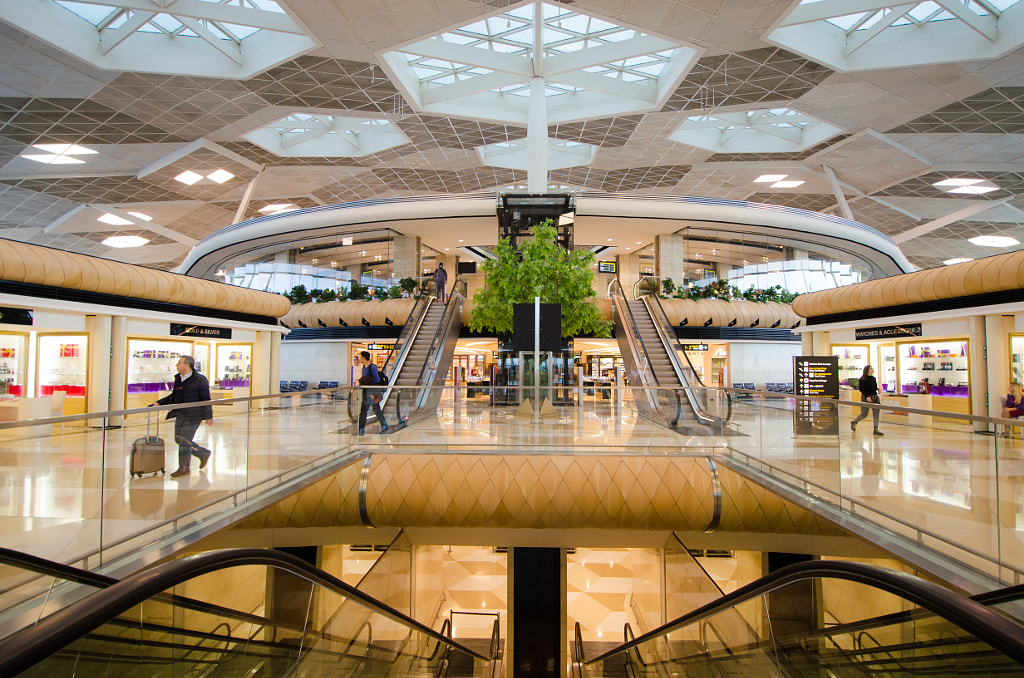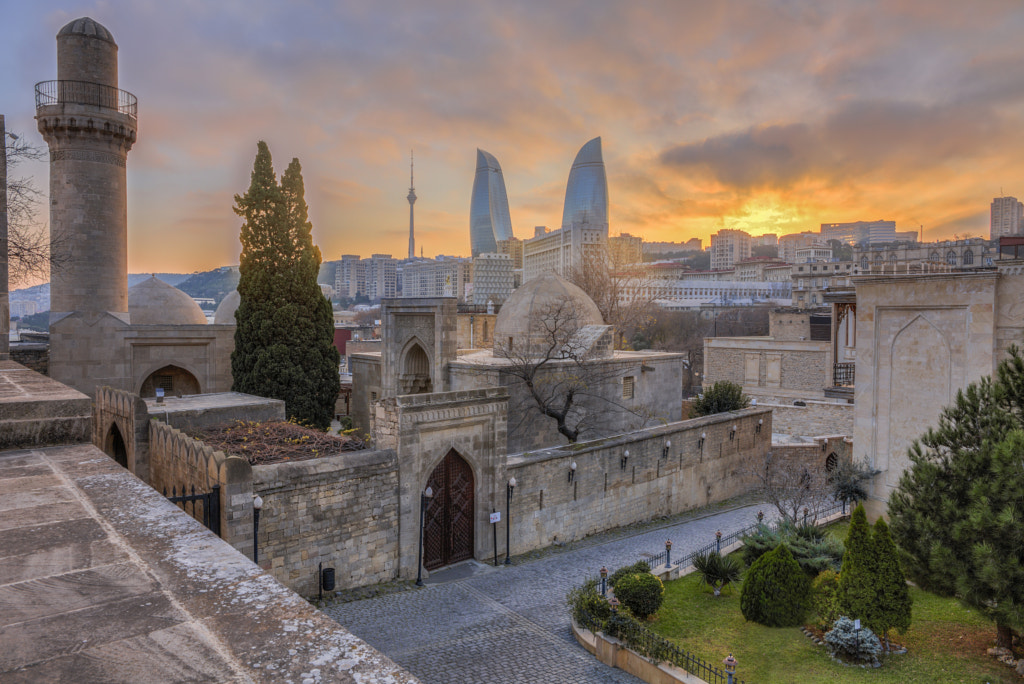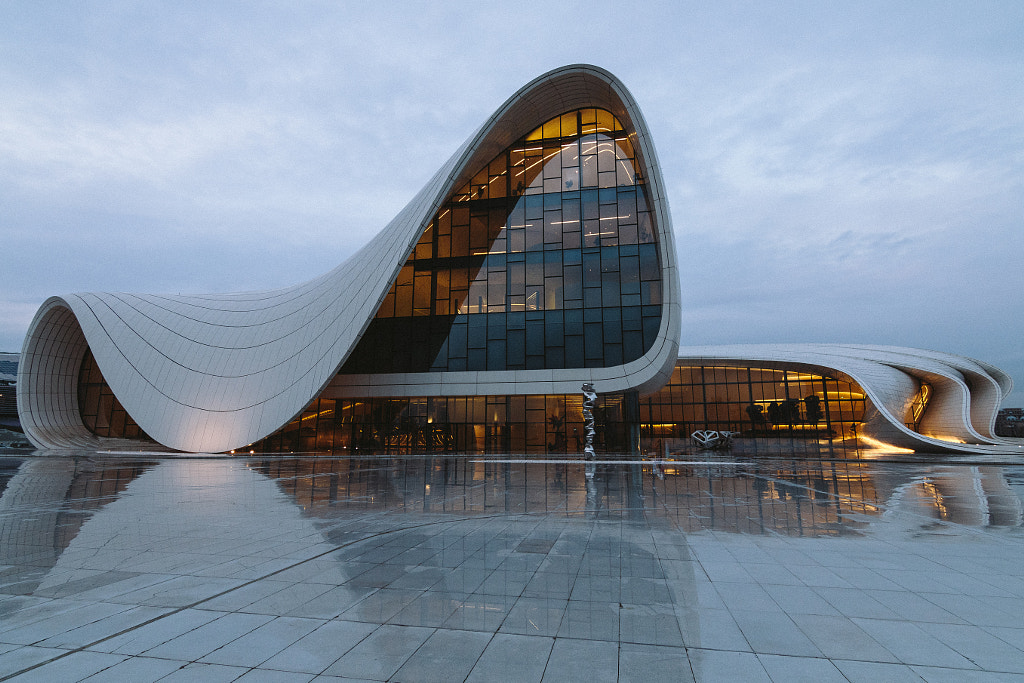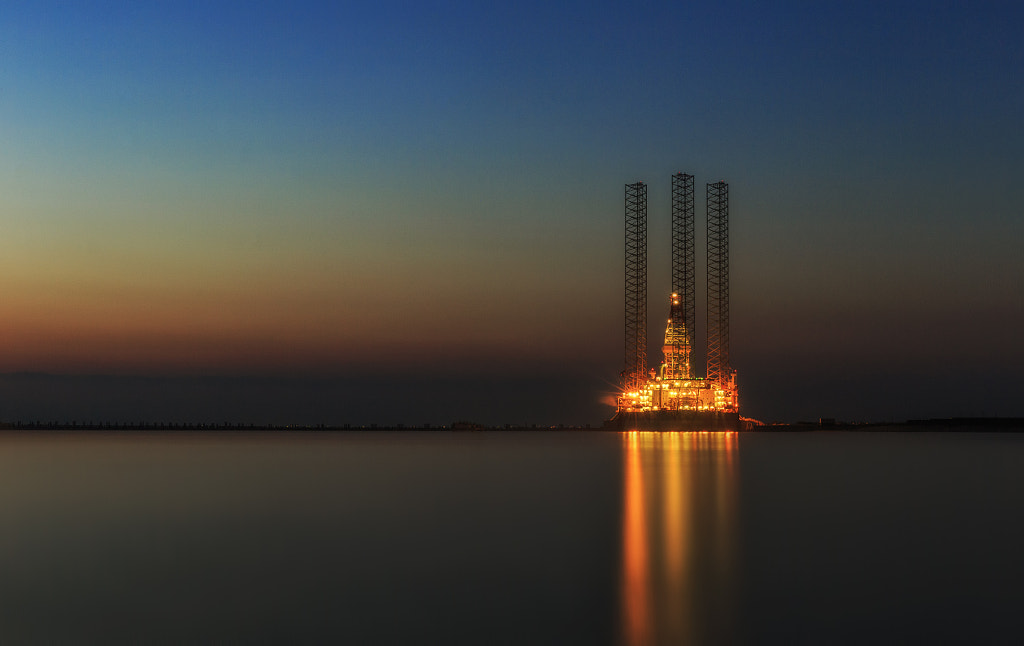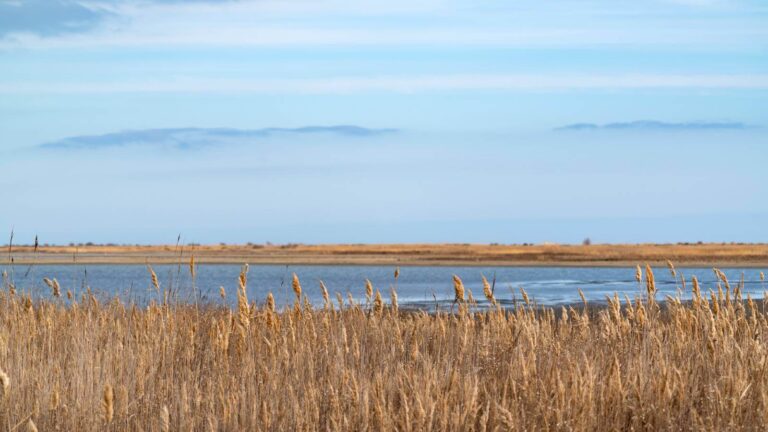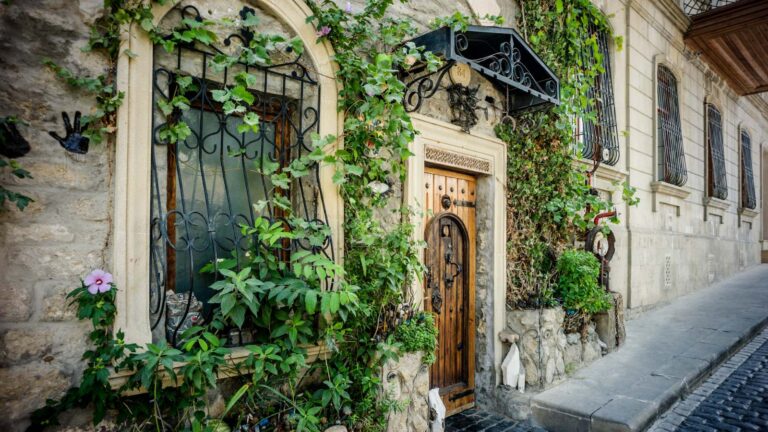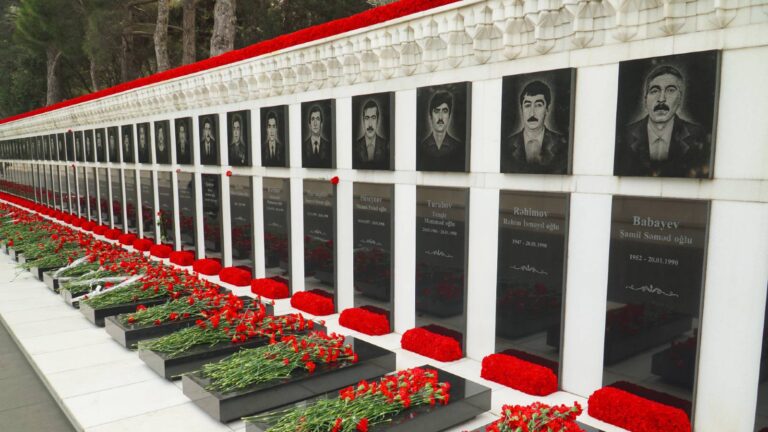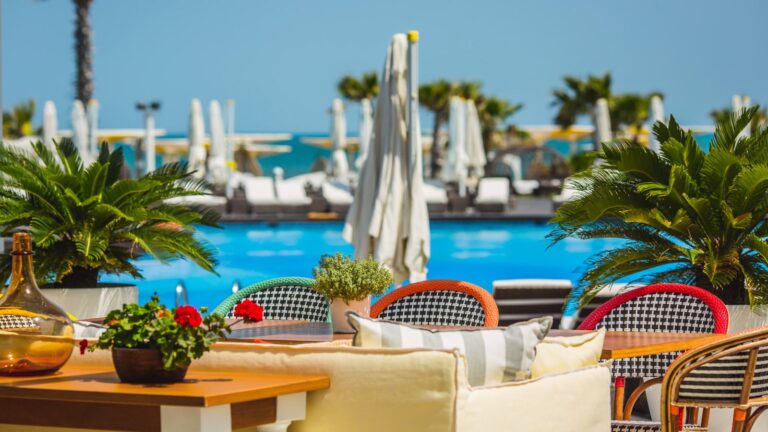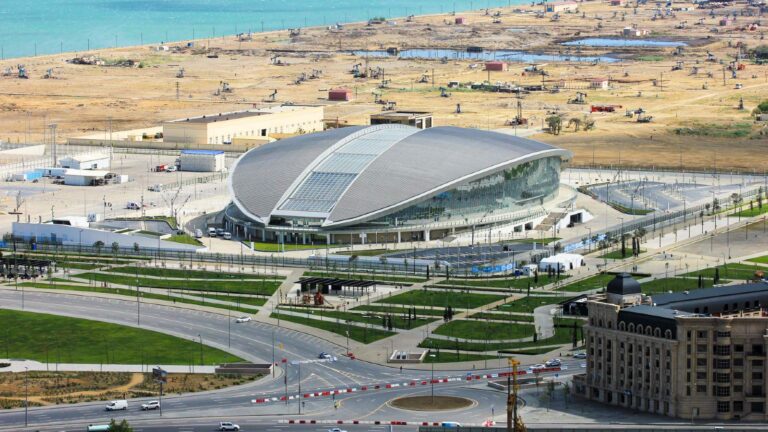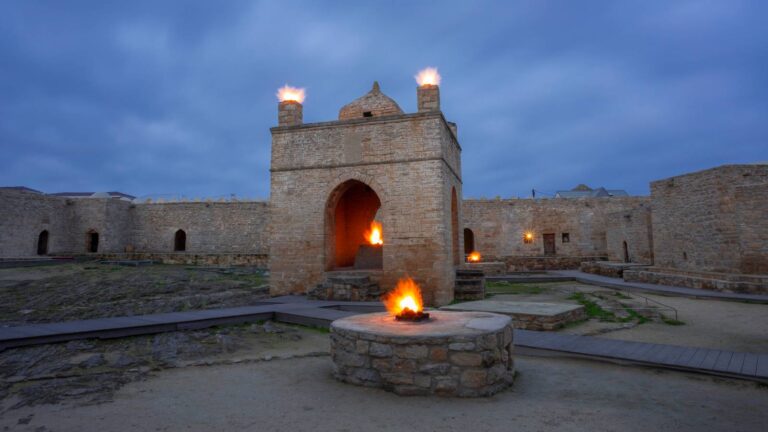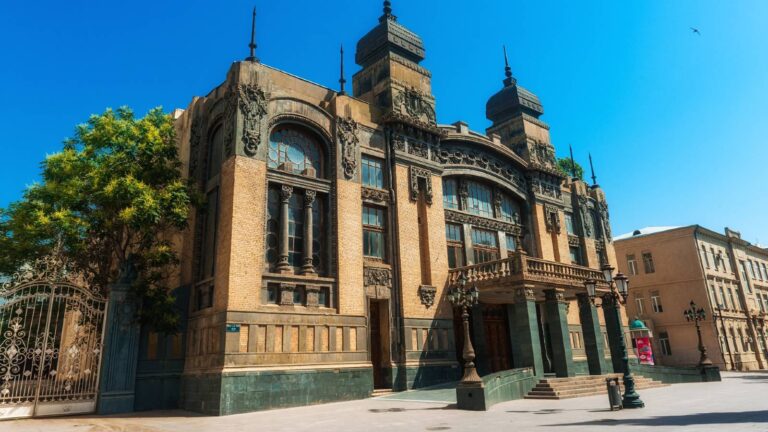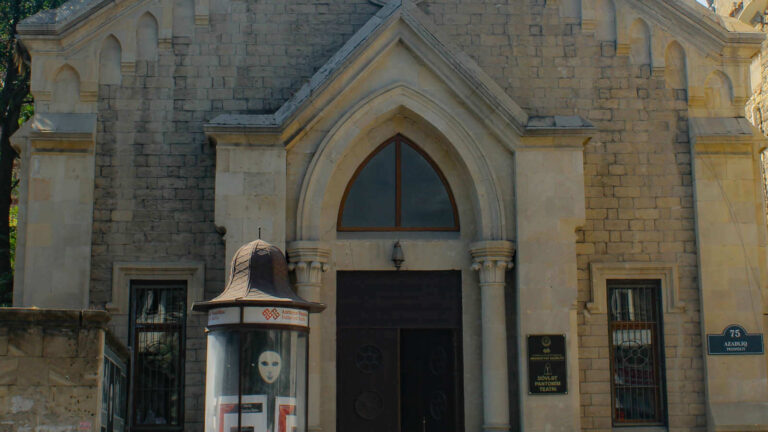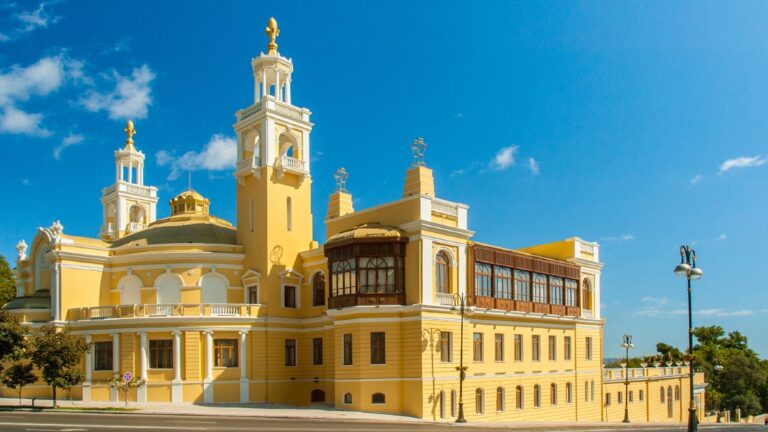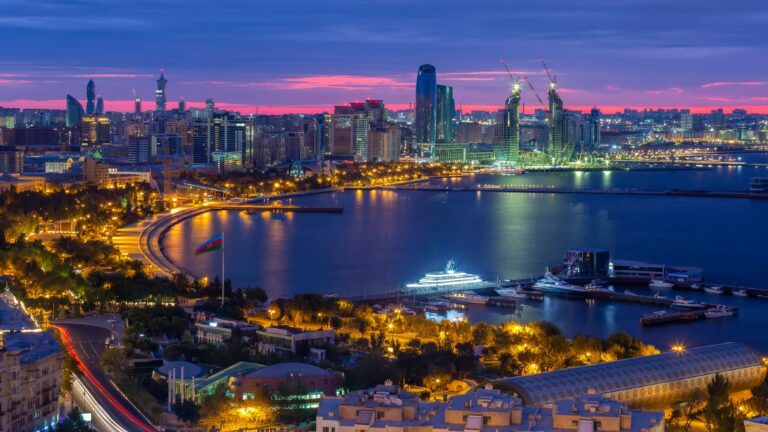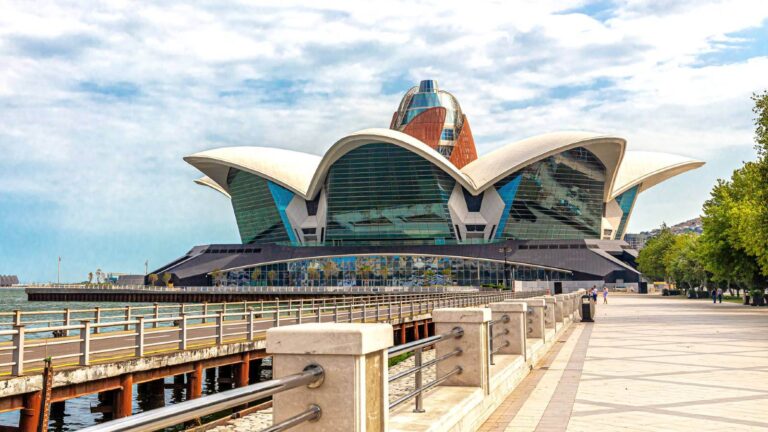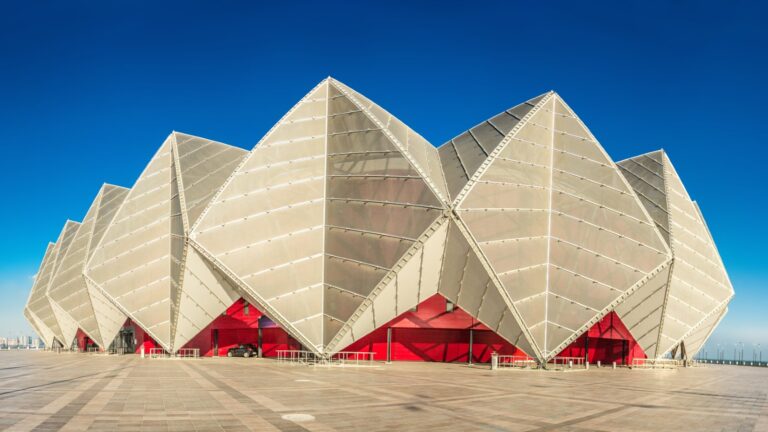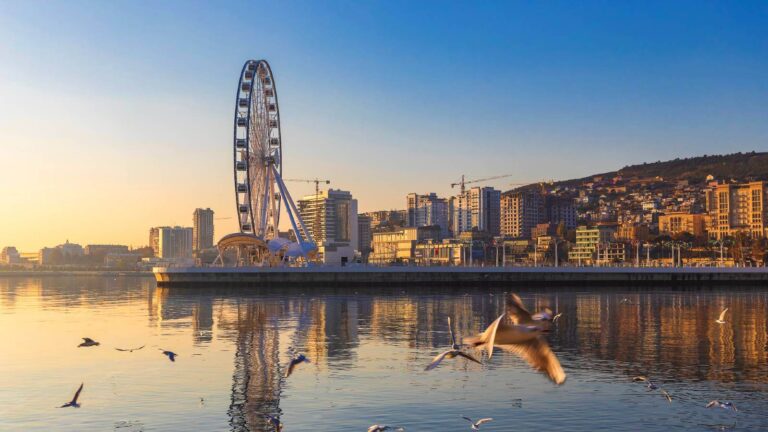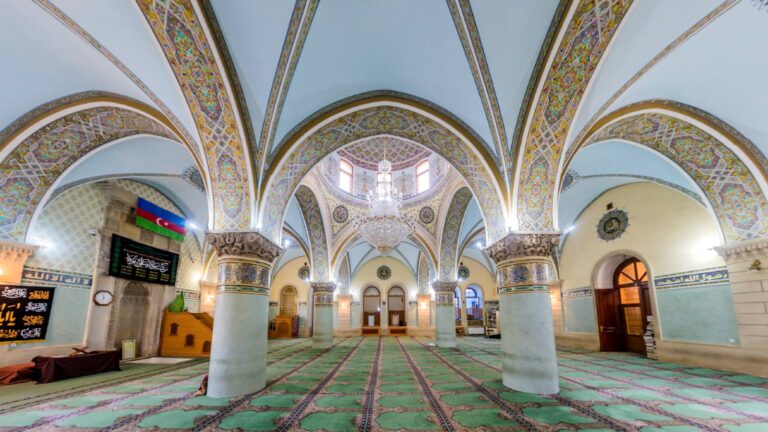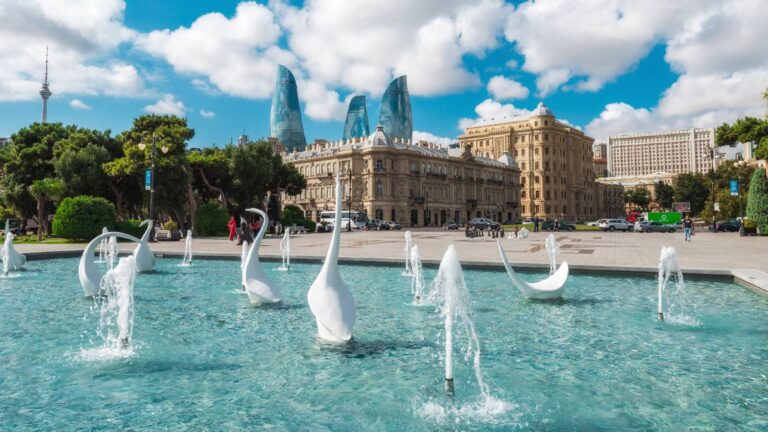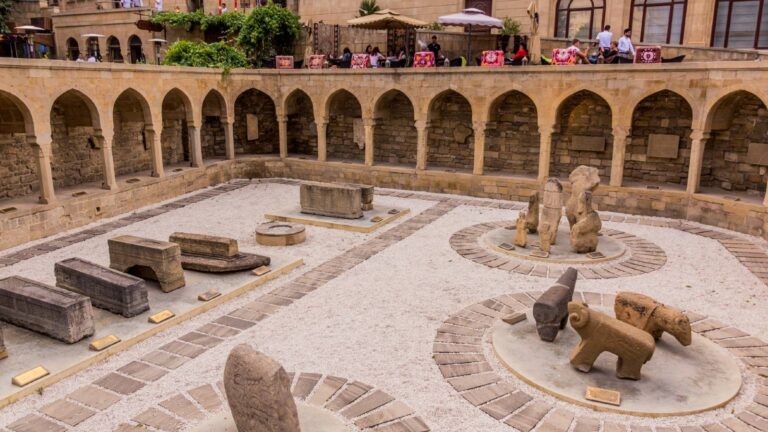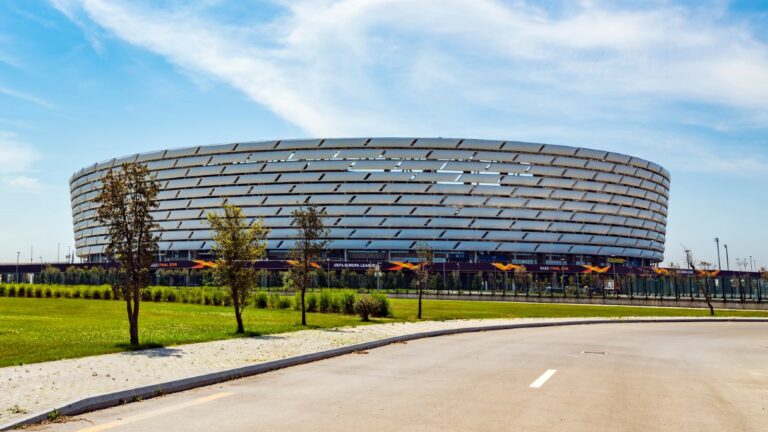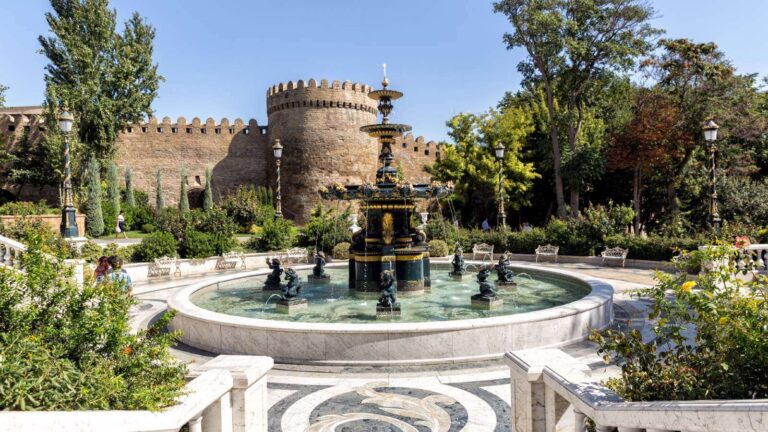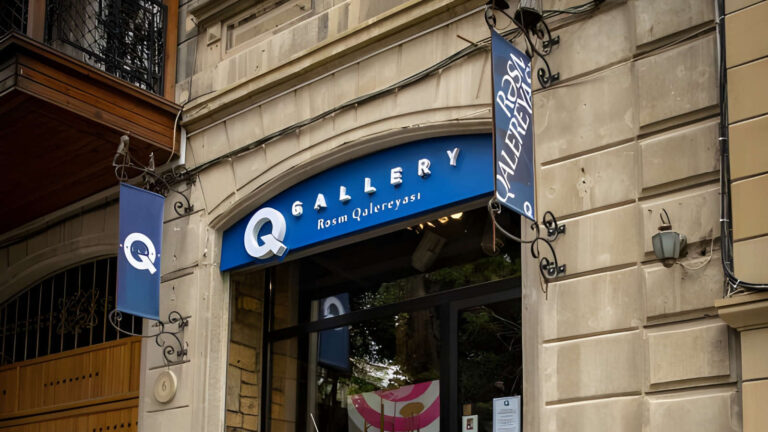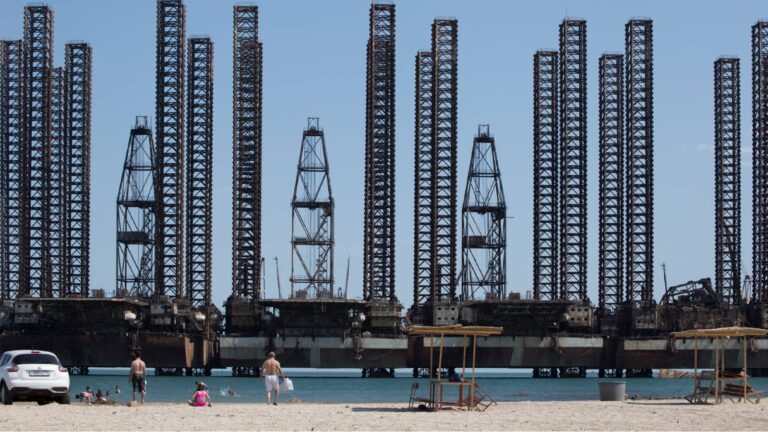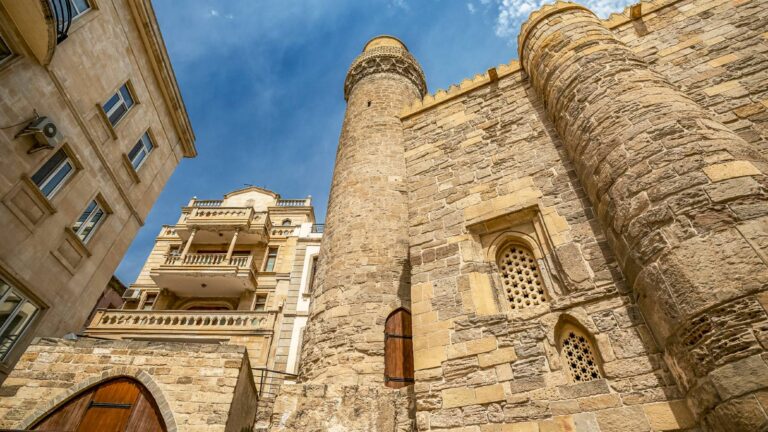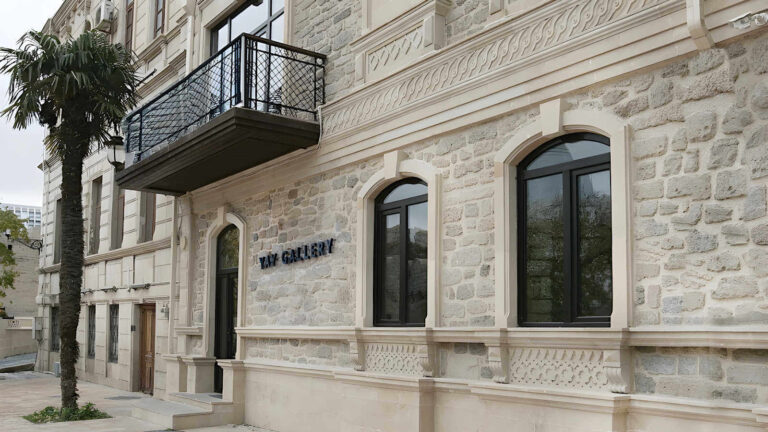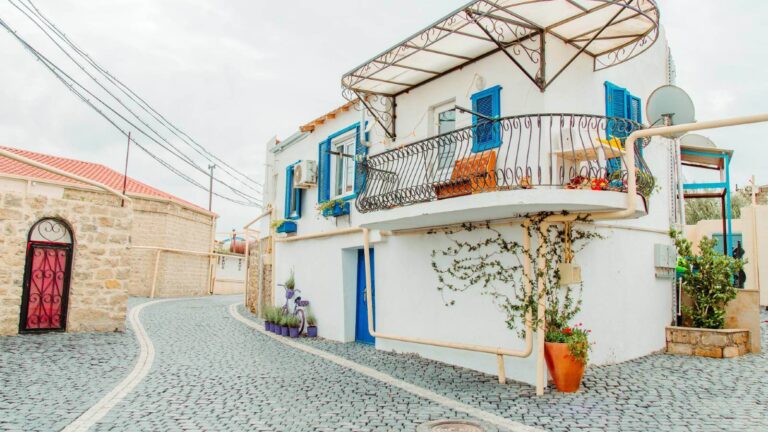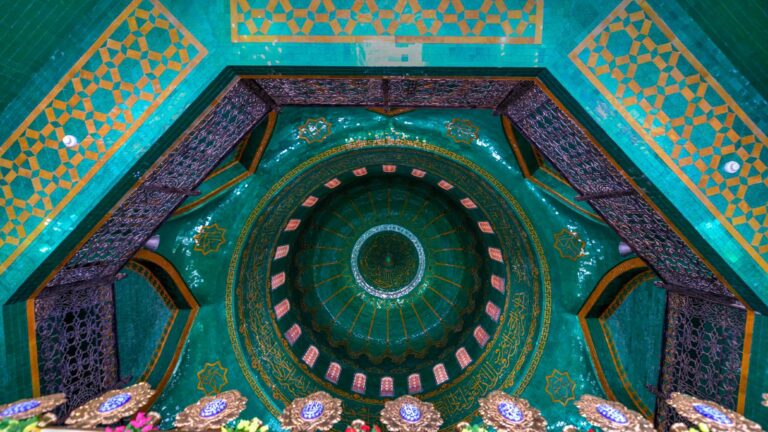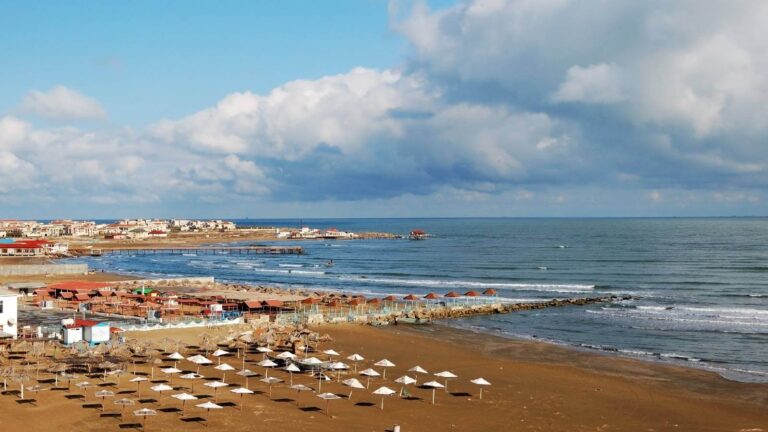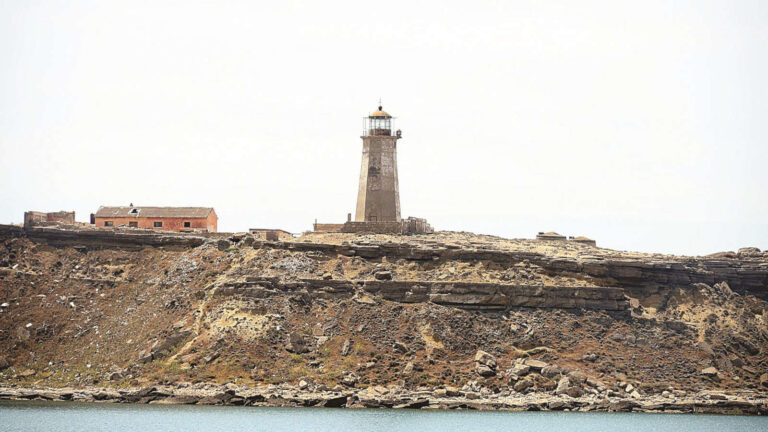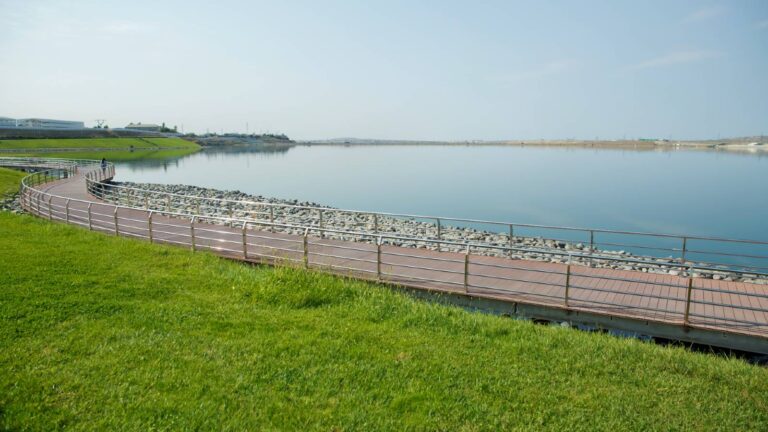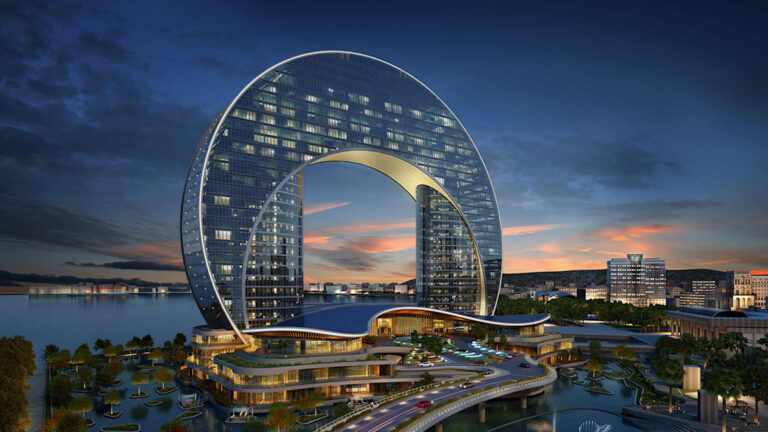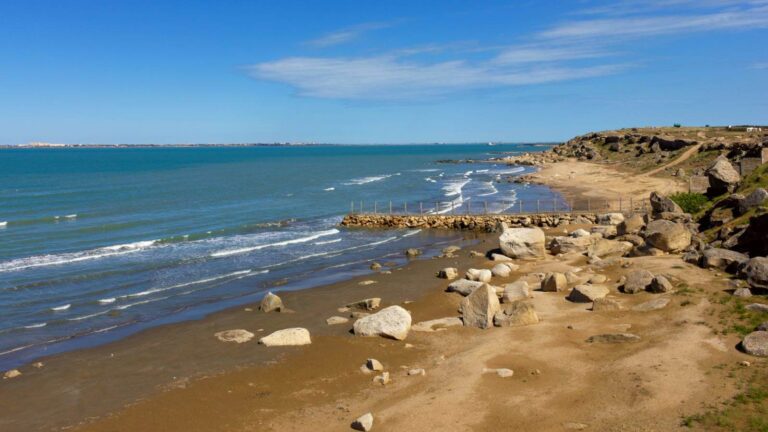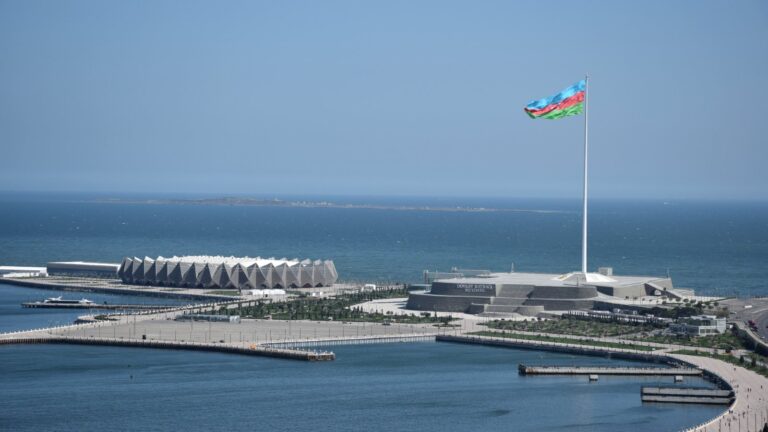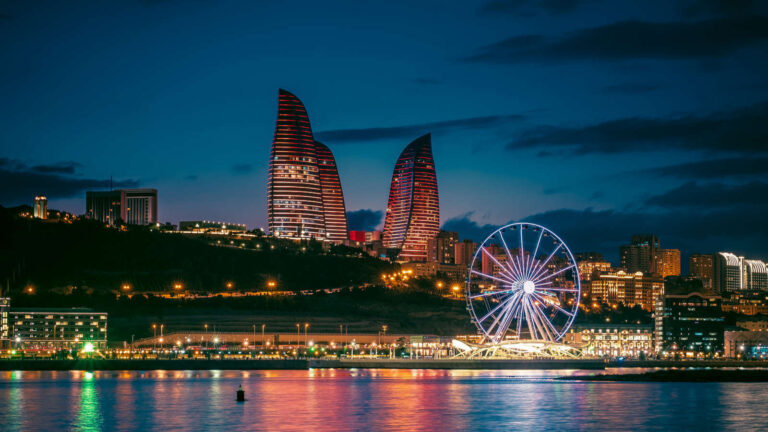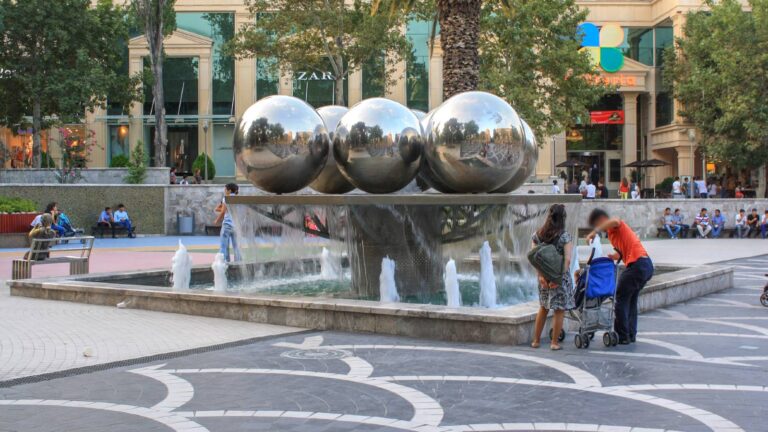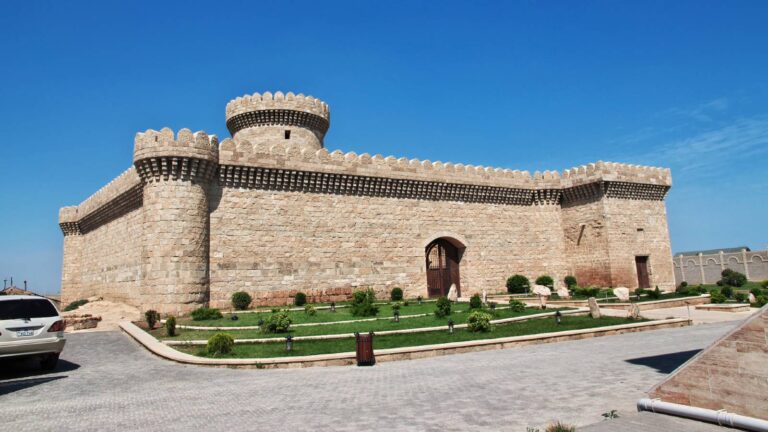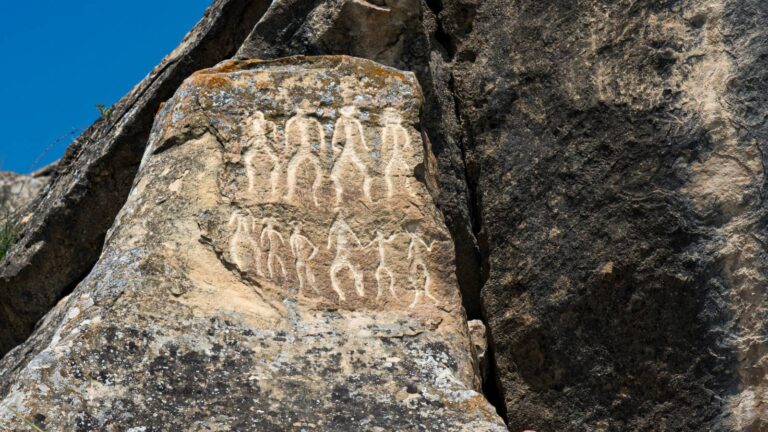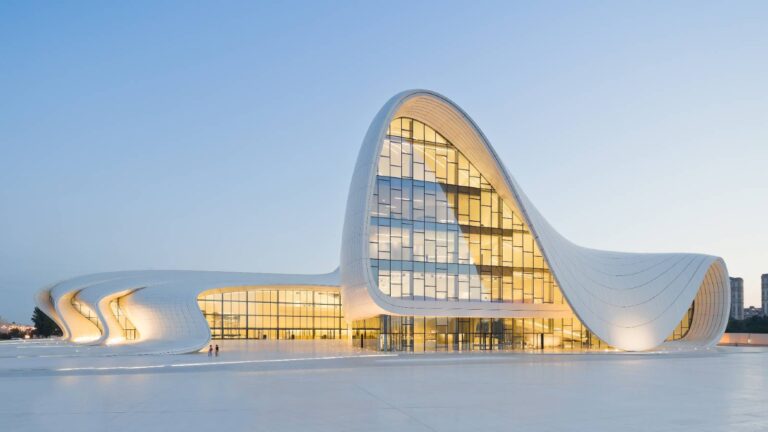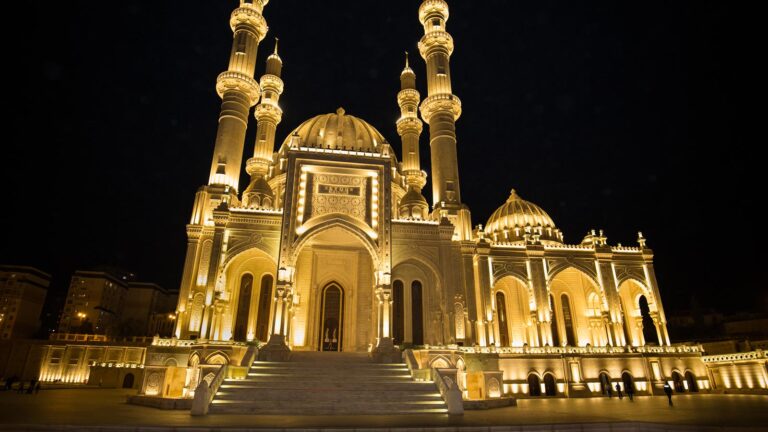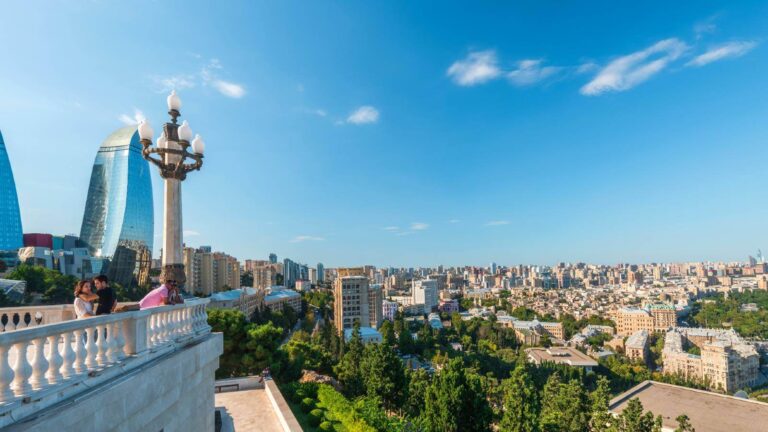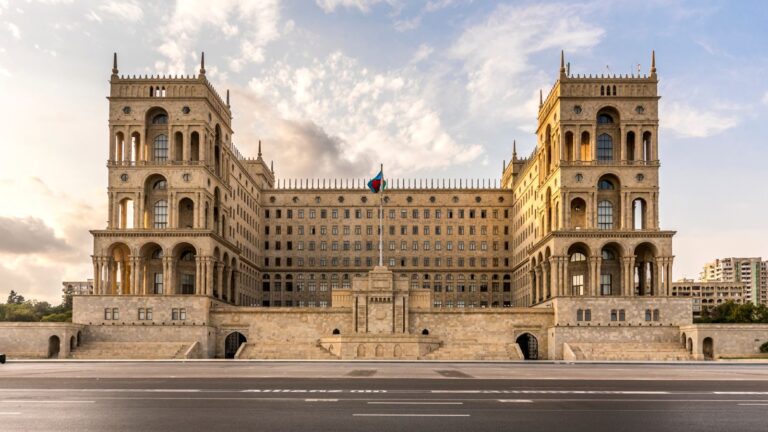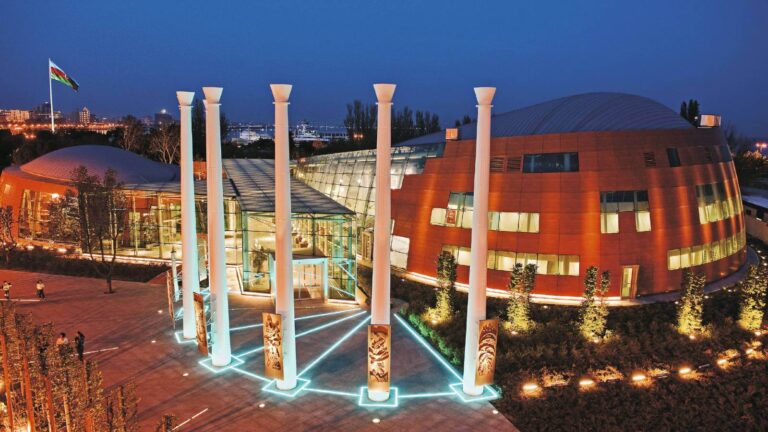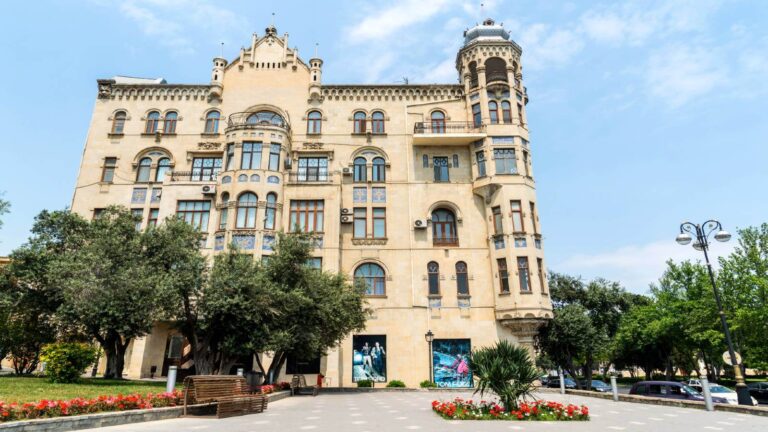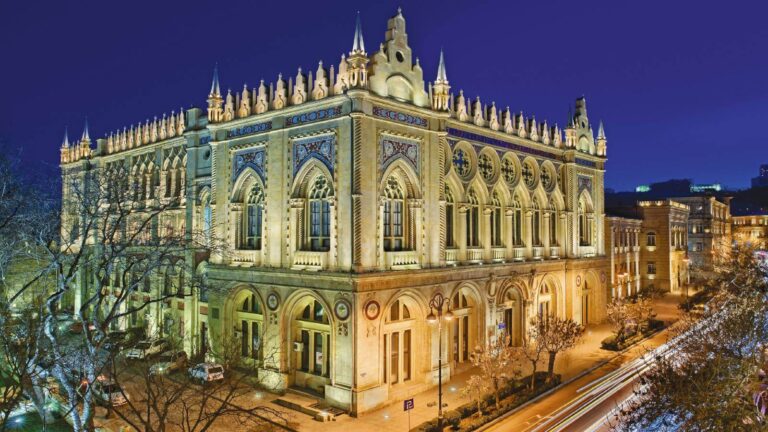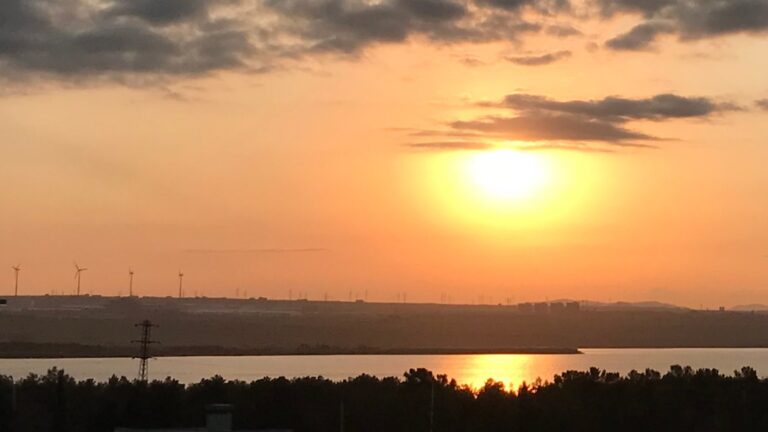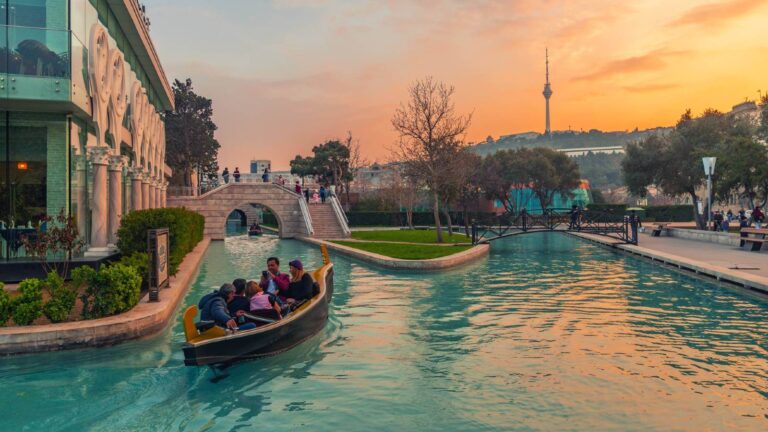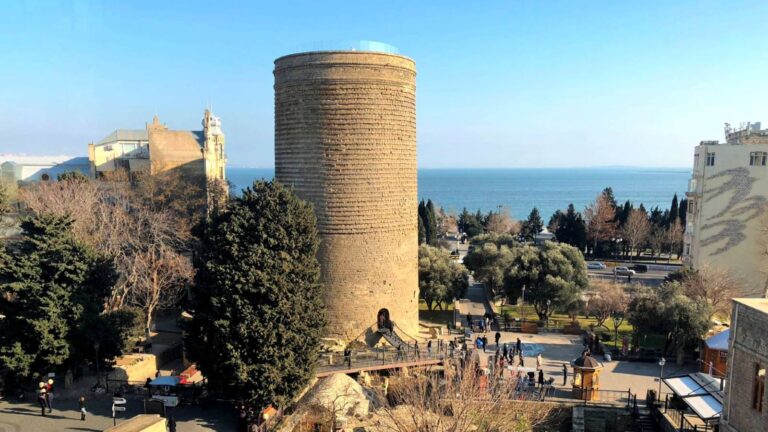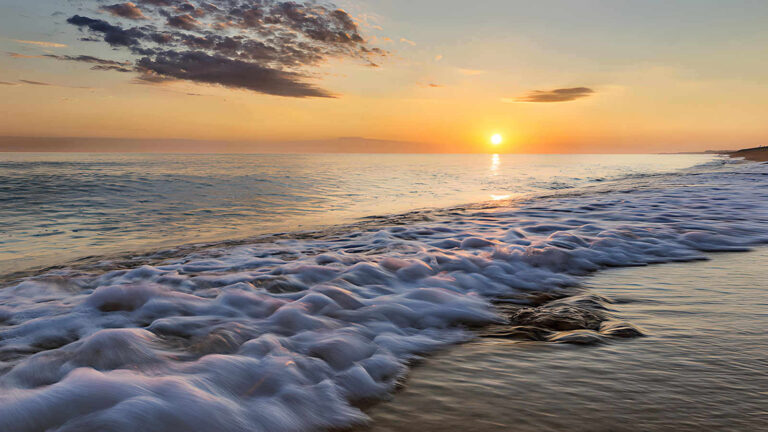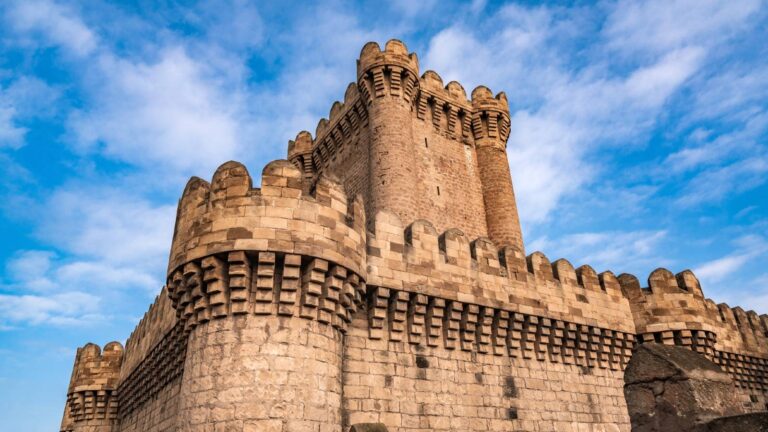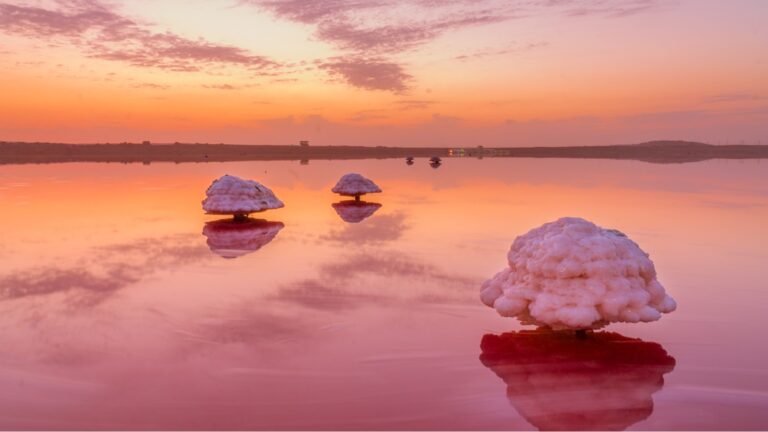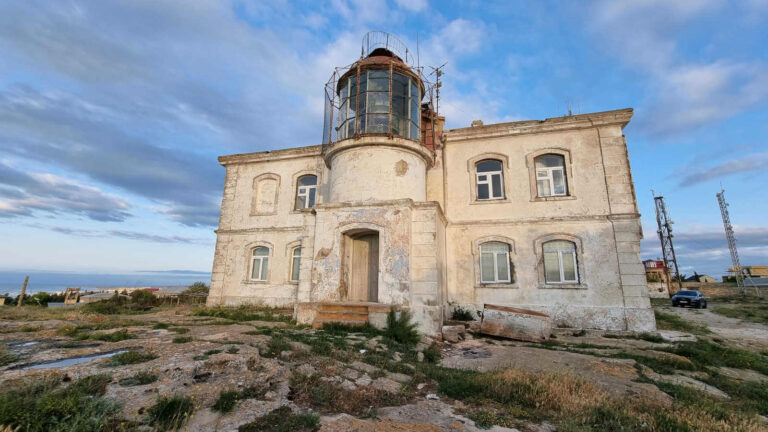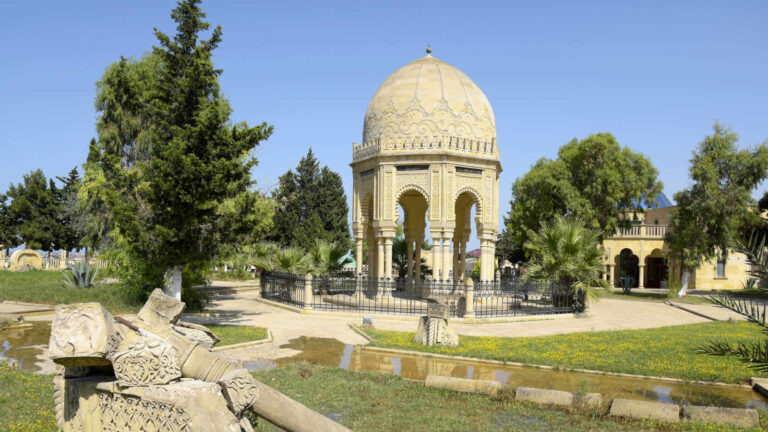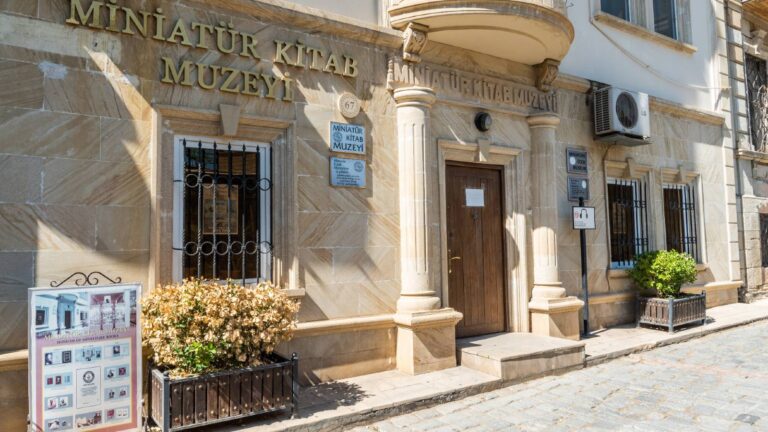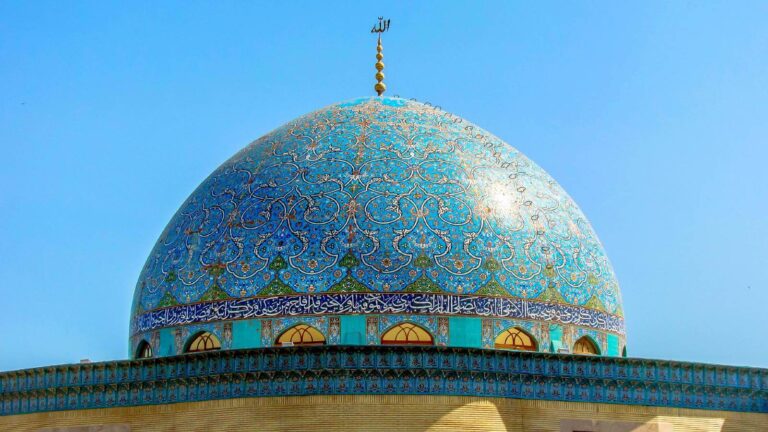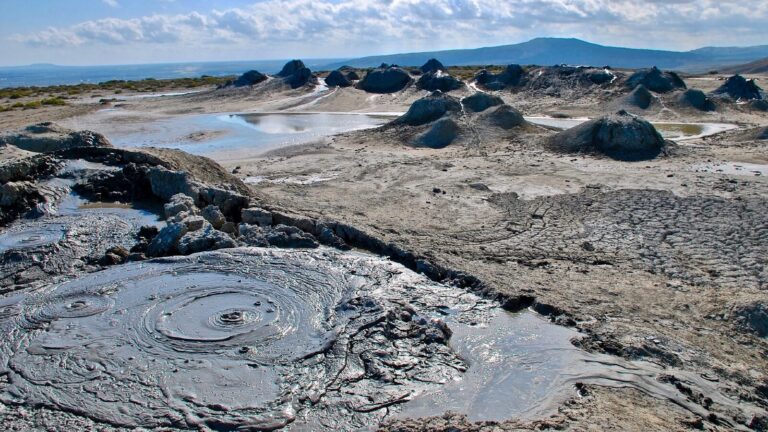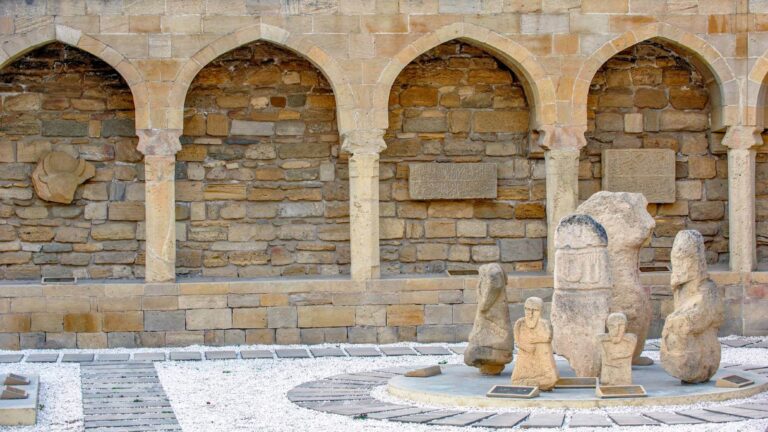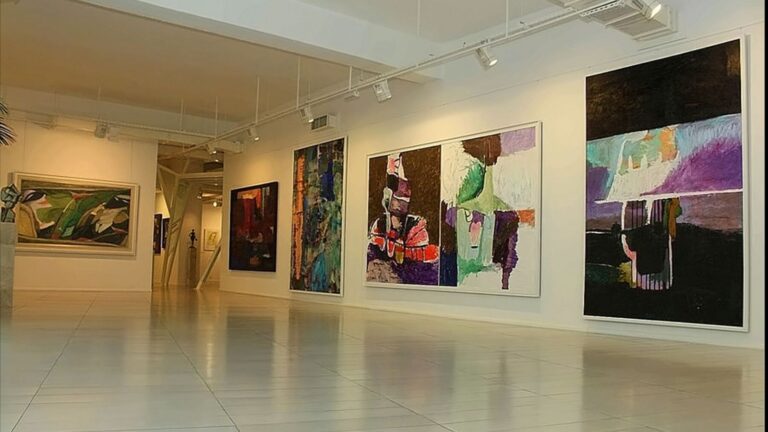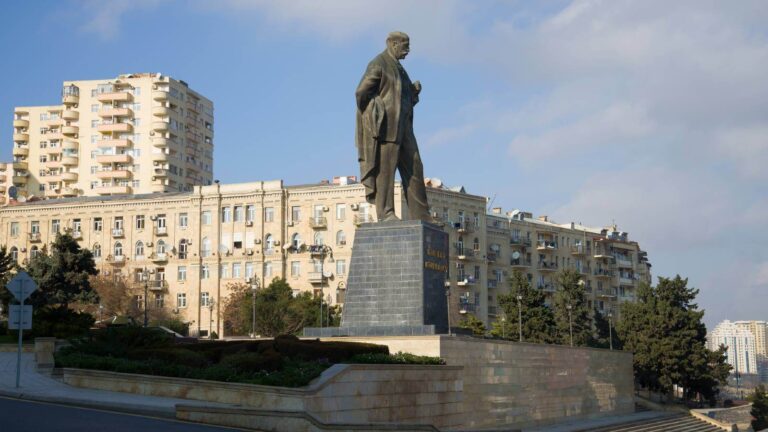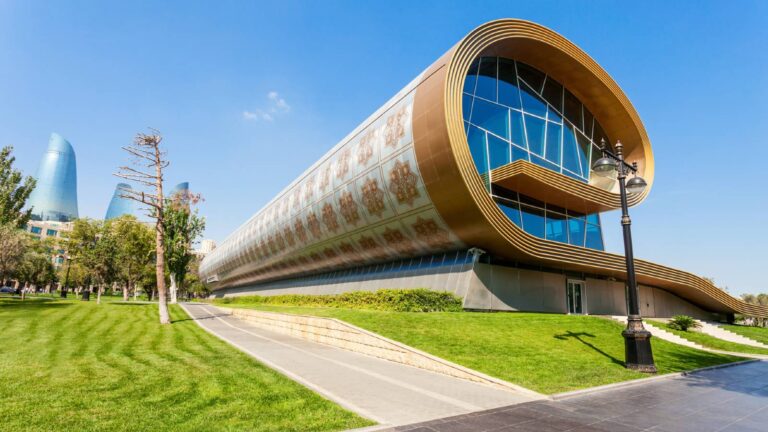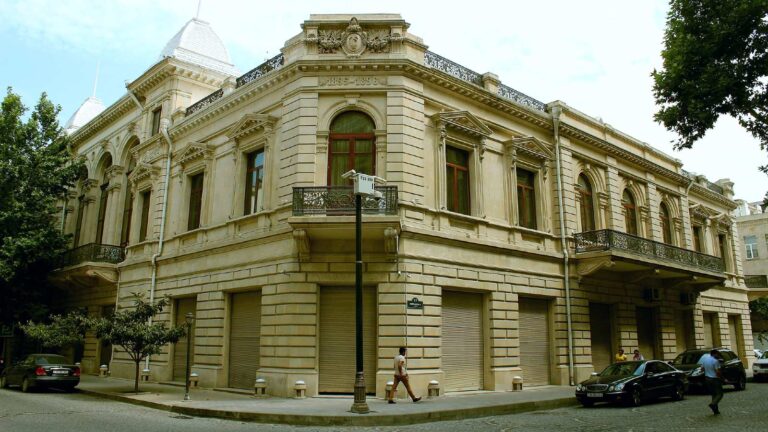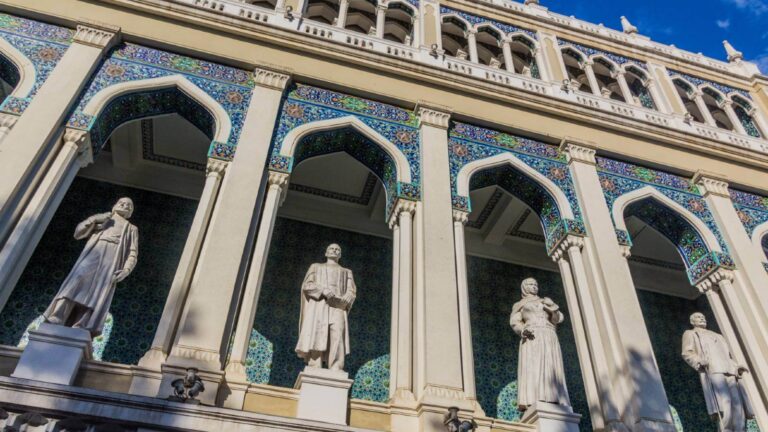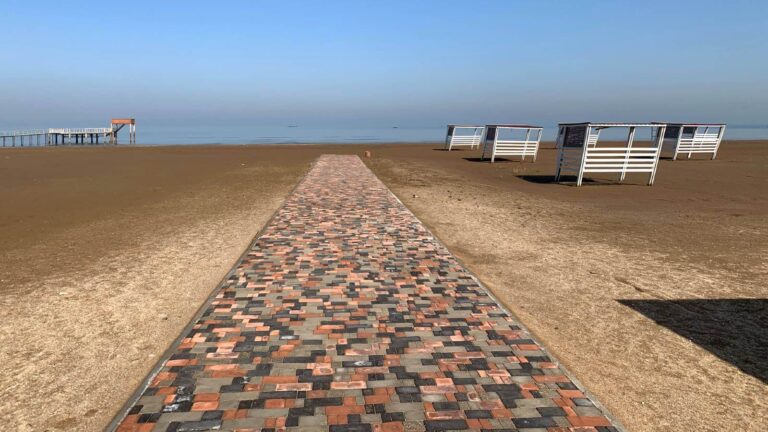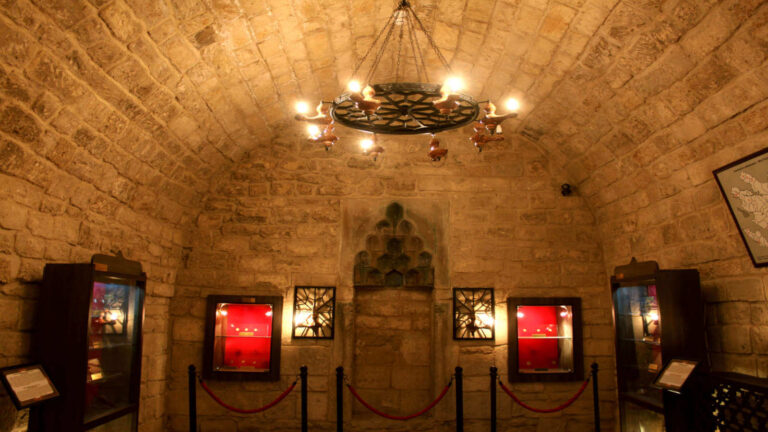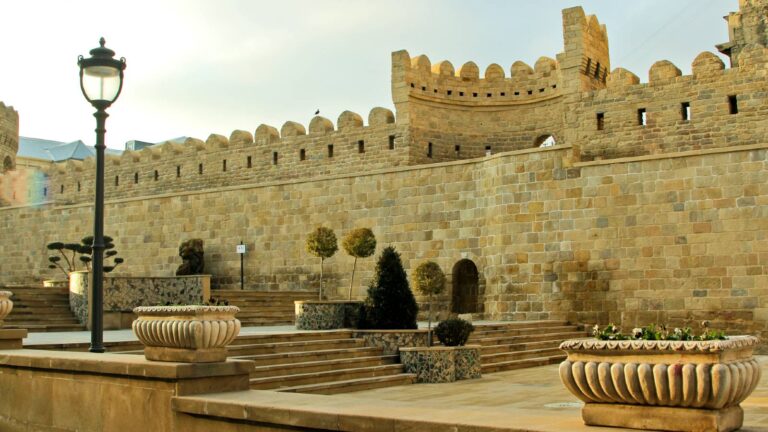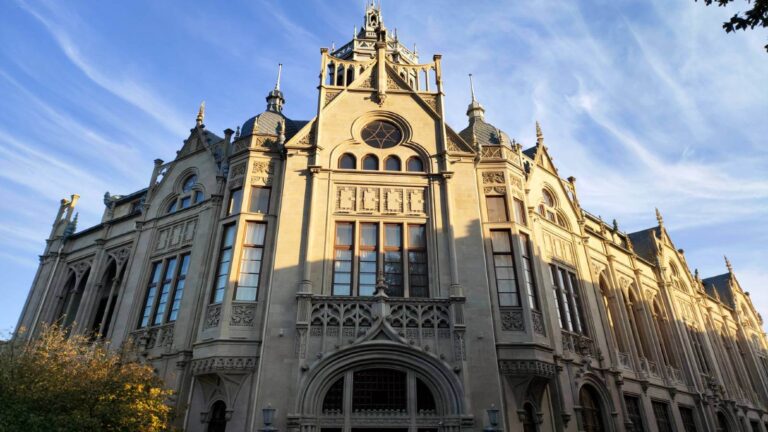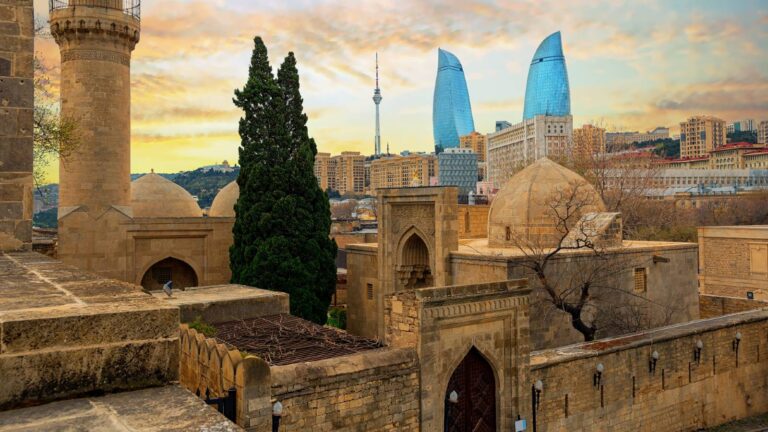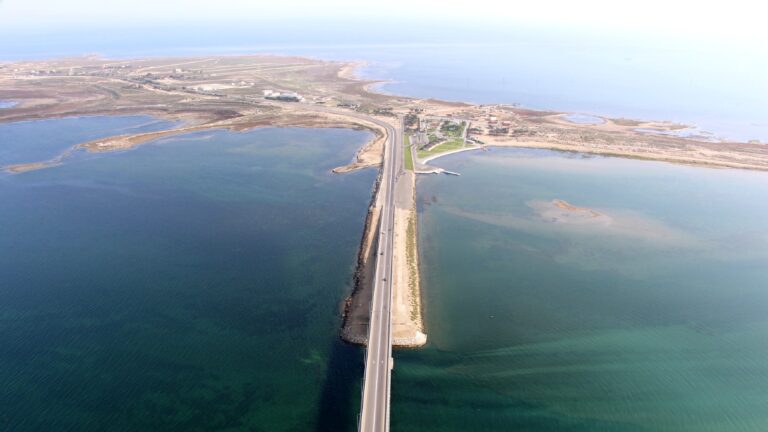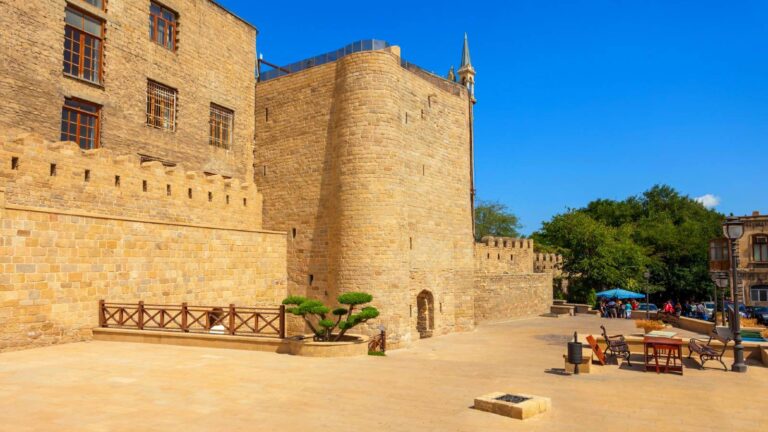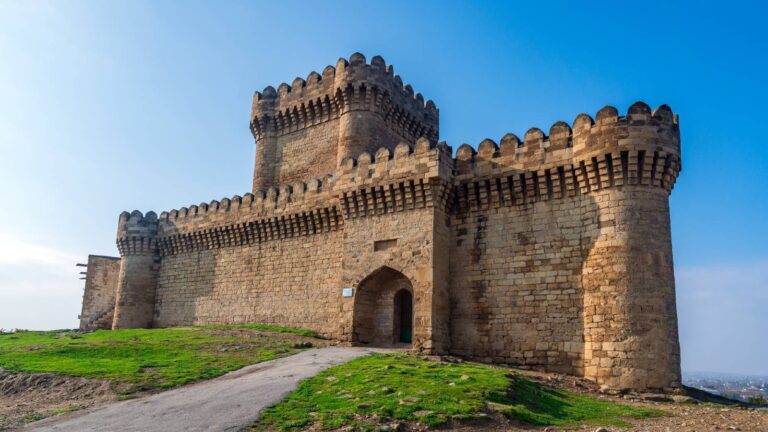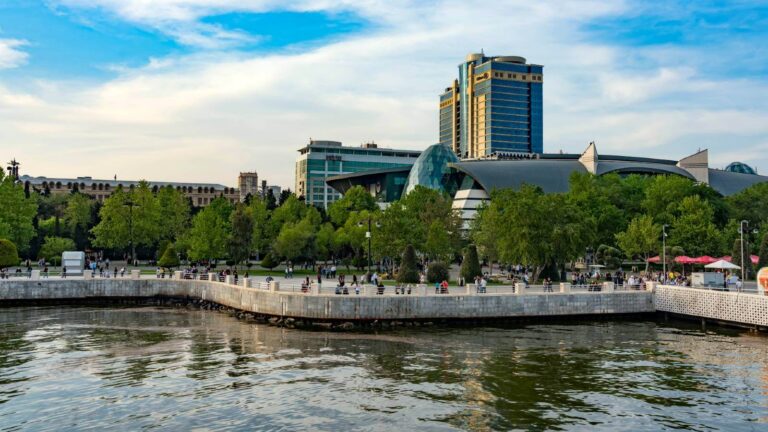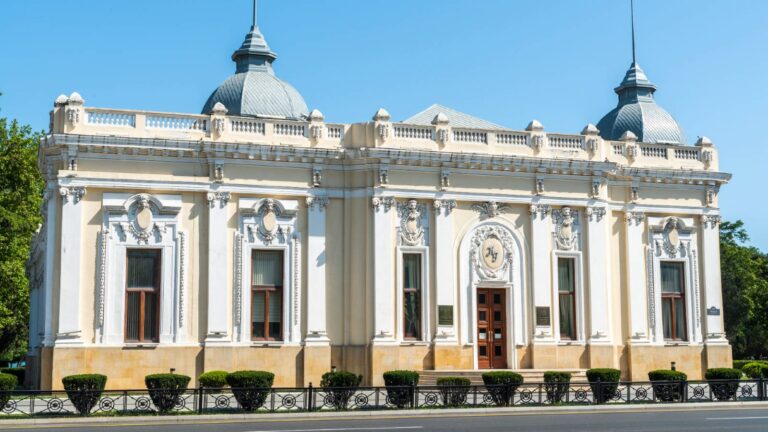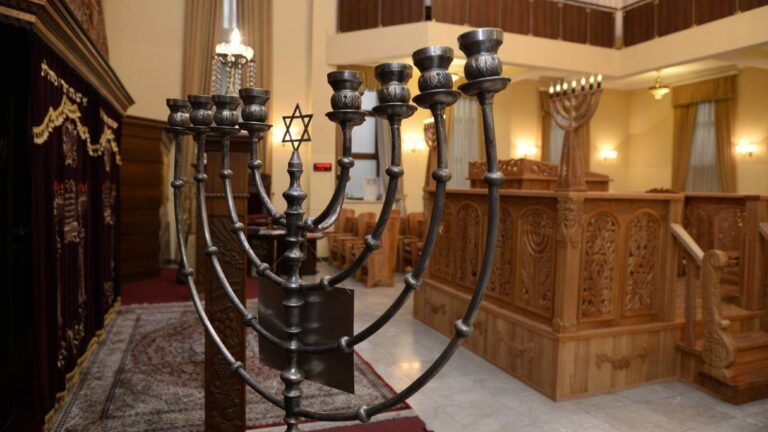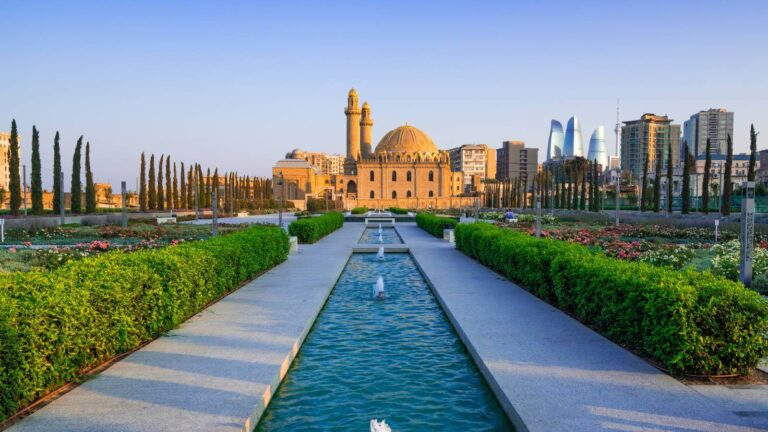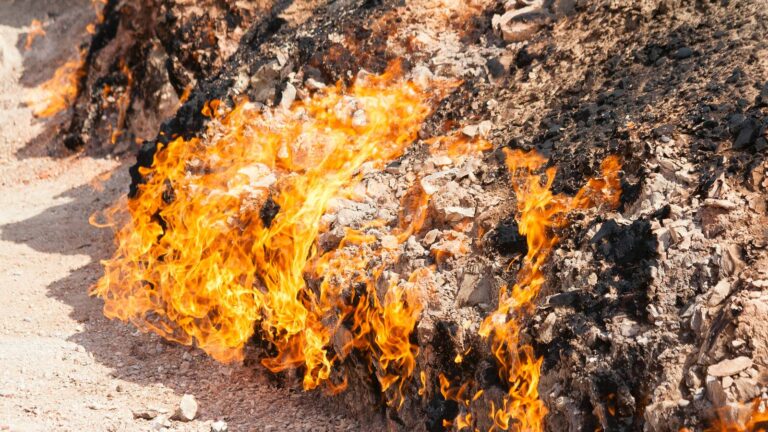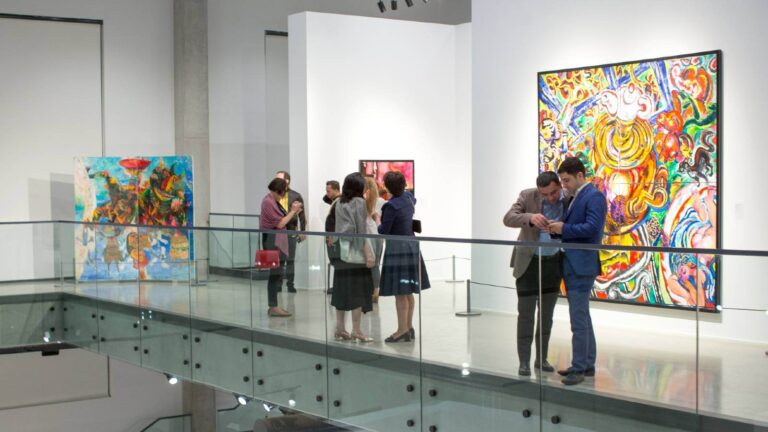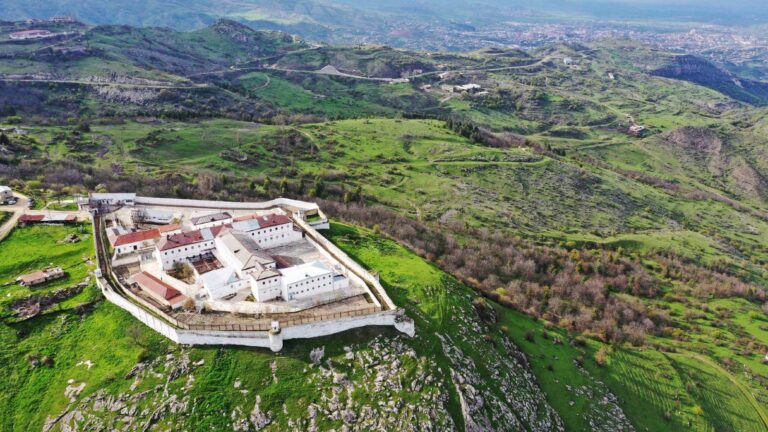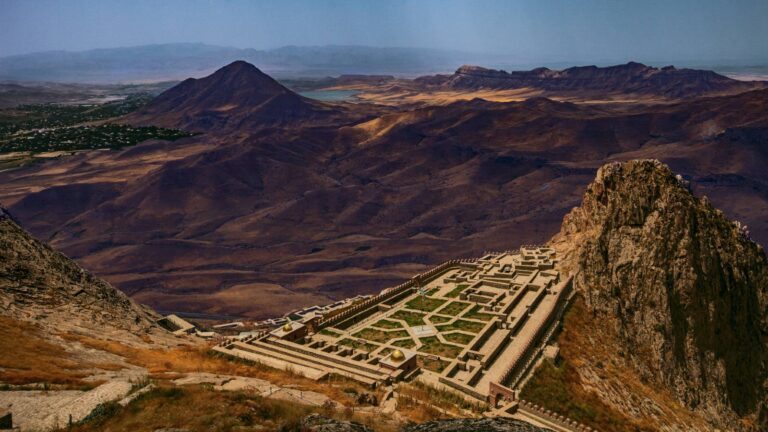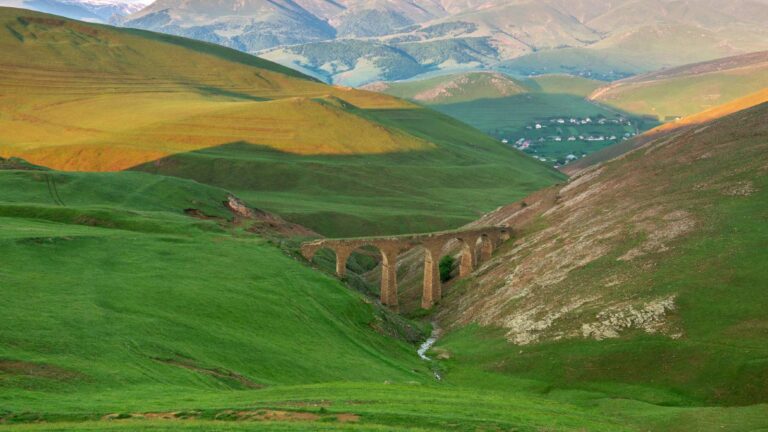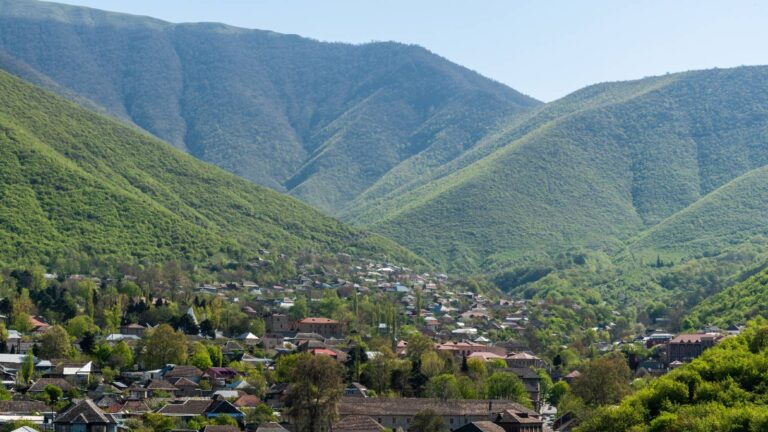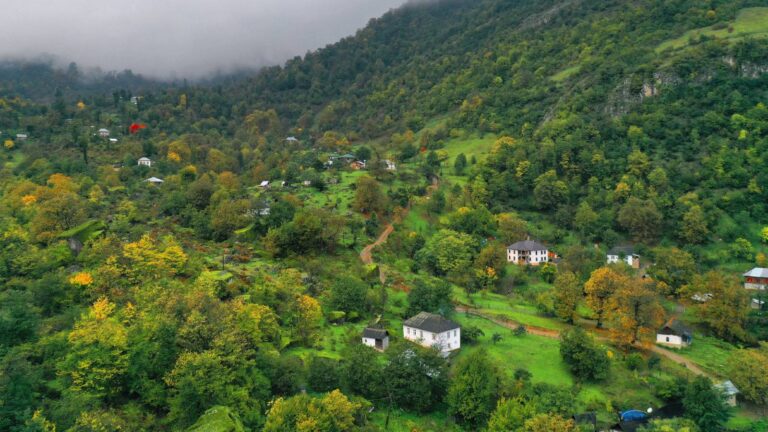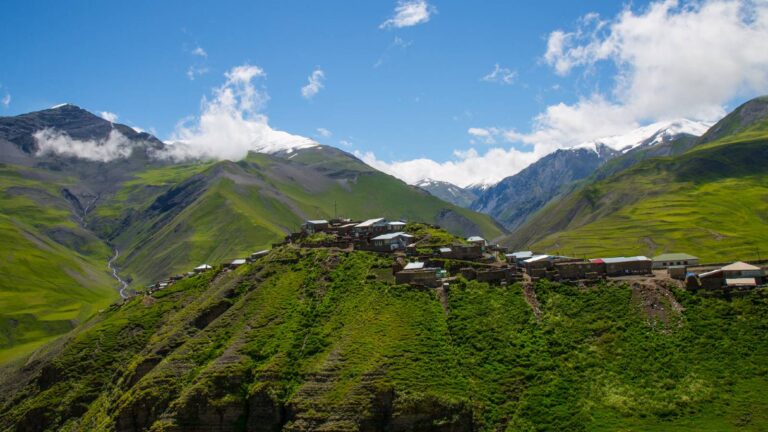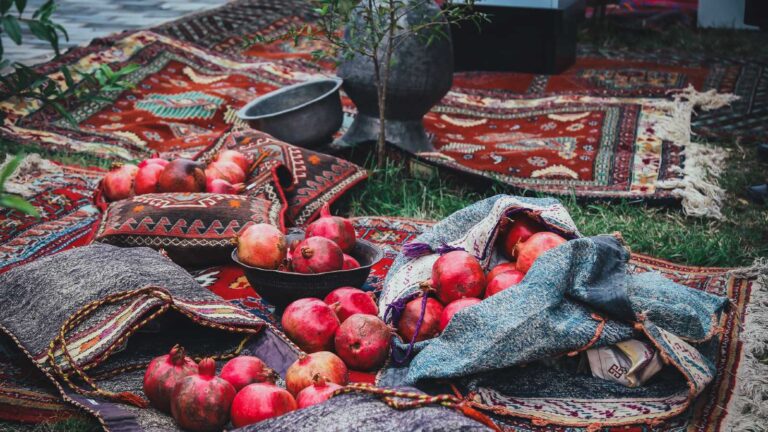By Plane
Baku is well-connected with major global air hubs and boasts the state-of-the-art Heydar Aliyev International Airport about 30 minutes’ drive from the city centre.
You can travel from Baku north to the Absheron Peninsula and south to Gobustan by buses or taxi, and the large city of Sumgayit to the north is reachable in only 30 minutes from central Baku thanks to an express railway.
Baku is a city of stunning contrasts where east and west, old and new mix harmoniously. Its UNESCO-listed Old City harks back to Baku’s days as a small port city on the Silk Road and buzzes with bistros, cafes, art studios and antiques shops.
The city’s modern skyline is studded with futuristic buildings, notably the Flame Towers and Zaha Hadid-designed Heydar Aliyev Centre. There’s a great selection of galleries, museums, theatres, and concert halls uncovering Azerbaijan’s rich culture and history. You can discover Azerbaijani food and wine at the city’s countless bars and restaurants, and enjoy strolling through the city’s many parks and boulevards.
North of Baku, the Absheron Peninsula attracts the crowds in summer with its resorts and beaches, and you can venture here year-round to discover Azerbaijan’s fascinating fire-worshipping heritage. The Absheron’s other attractions include medieval towers, a winery and the Zira Cultural Centre and Eco Park, among others. South of Baku, the petroglyphs and mud volcanoes of Gobustan are one of Azerbaijan’s top attractions.
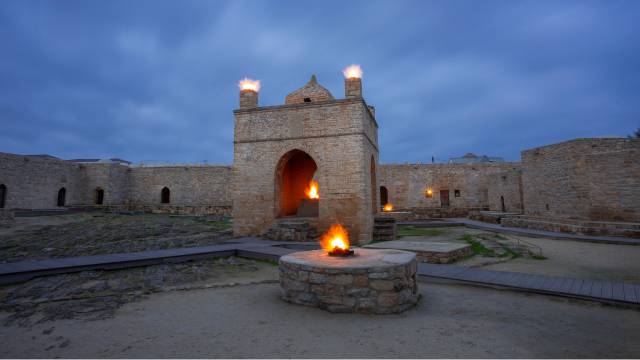
Ateshgah 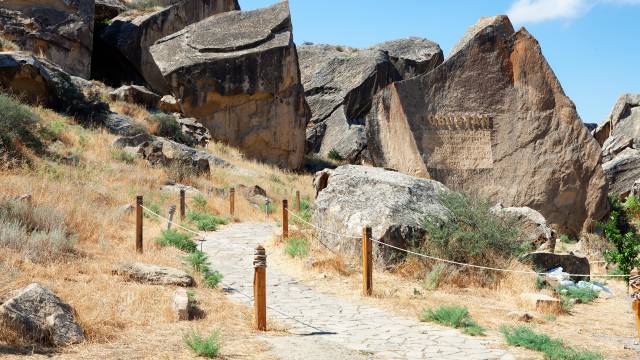
Gobustan Petroglyphs
Baku’s exquisite Old City is a historical gem. The ancient core of the city, it hosts major landmarks the Maiden Tower and the Shirvanshahs’ Palace, which both house fascinating museums. Another great sight to visit is the Baku Khan’s Palace. Elsewhere in Baku, the National History Museum is well worth browsing for an overview of Azerbaijan’s eventful past. Dotted around the city centre, meanwhile, are the architectural traces of Baku’s fabled Oil Boom period of the late 19th-early 20th centuries.
A short drive south of Baku is a must-see sight: the UNESCO-protected petroglyphs of Gobustan. There are over 6,000 of them with the oldest dating back some 40,000 years. Nearby you can also visit some of Azerbaijan’s astonishing collection of mud volcanoes – the greatest concentration of them in the world.
The Absheron Peninsula has two sites associated with ancient fire-worshipping: Yanardag and the Ateshgah Fire Temple. The latter was built in the 18th century by Hindus trading in Baku who deemed the astonishing naturally burning flames here sacred. You can see the last naturally occurring flames flickering away mysteriously on the Yanardag hillside. Visit these places to understand why Azerbaijan is often called ‘the land of fire.’
Baku boasts a vibrant cultural scene. Here you’ll find the country’s best museums spanning a wide range of themes, from the fantastic Carpet Museum to a host of house museums and the new Ship Museum recounting the story of Caspian Sea shipping.
Events and Festivals
Baku is also where many of Azerbaijan’s events and festivals happen, from the annual F1 Azerbaijan Grand Prix to the autumn Baku Jazz Festival, attracting performers from around the world. The very popular Zhara Music Festival takes place each summer on the Caspian coast of the Absheron Peninsula with performances by top stars mainly from the CIS region.
Cuisine
The city’s many authentic restaurants dishing up national cuisine are great places to try beloved Azerbaijani dishes like dolma, plov and gutabs, and to get a taste of Azerbaijani wine. There are excellent theatres and concert venues, too, with busy schedules. For example, you can enjoy an evening of mugham – a national folk music genre – at the Mugham Centre, or head to the popular Marionette Theatre for a memorable rendition of Azerbaijani classics like Leyli and Majnun.
Baku is the largest city on the Caspian Sea and the world’s lowest-lying capital at 28 metres below sea level. Its climate is semi-arid with mild winters and hot and humid summers. The city is famous for the strength of the winds, especially in winter.
The Absheron Peninsula surrounding it is rich in oil and gas deposits – and mud volcanoes! The Absheron is in fact the most arid area in Azerbaijan and its landscape is largely semi-desert. To explore its wild side, head to the Absheron National Park on the very tip of the peninsula where you can see gazelles and rich birdlife. The Caspian Sea, meanwhile, is the world’s largest lake and inhabited by up to 400 endemic species.
The oil and gas industry dominates the economy of this region. Baku being a large capital city, it also hosts a wide variety of other industries, including metallurgy, construction, transportation, creative industries, and increasingly tourism.
The city of Sumgayit is the second largest industrial city in Azerbaijan after Baku and hosts a number of companies working in the metallurgical, chemical, construction, textiles and pharmaceuticals industries.
Agriculture is widespread on the Absheron Peninsula, including growing fruits, vegetables, nuts, saffron and flowers, as well as viticulture and livestock farming. Besides oil, salt has also historically been extracted on the Absheron.

